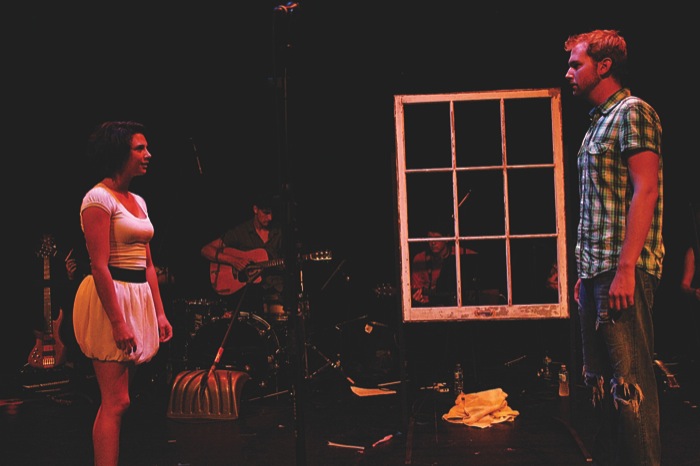Mark Dyer
Contributor
Although it debuted as a part of the 2011 Summerworks Musical Works series, calling PROGRAM a musical is a misnomer. The show, written, and directed by York student Samuel Sholdice, is a blend of musical theatre and indie rock.

Billed as a “musical performance”, PROGRAM is more of a concept album than a typical musical. The staging was minimal, and the venue, intimately small. Instead of being relegated to a pit, the band was featured onstage. When singing, the actors stood at the mic stands, becoming part of the band. Much like indie rock shows, there was no dancing.
Most importantly, the folk-rock score, which featured an eclectic array of instruments, from banjo to melodica, was near perfect. Sholdice, the drummer of local band Rival Boys, drew his ensemble from Toronto’s indie scene. The band featured musicians from We Are Growling Woods, Donlands and Mortimer, and Clarinet Panic, along with Rival Boys’ violinist Lee Rose and multi-instrumentalist Matthew Karas.
This indie-rock aesthetic could have hijacked the entire performance – turning it into a concert with slightly more scripted banter. Thankfully, Sholdice’s script was just as good as his score.
The show takes full advantage of its Toronto setting. The city’s iconography is used to great effect. The three-dollar TTC fare becomes much more than change. In PROGRAM, that loonie and toonie become symbols of movement and possibility. The two and only set pieces, a snow shovel and a window frame, reflect a city that is trapped indoors for much of the year and struggles to venture out.
Like Toronto, the stage was always crowded. The entire cast remained on stage along with the band throughout the show. The cast, as diverse as the instrumentation, covered a range of temperaments. Tiara-clad princesses and muttering, ukulele-wielding misanthropes inhabit the same space.
Narratively, PROGRAM is a show about failed expectations. In the first scene, the protagonist Sterling, played by Jeremy LaPalme, peers over the audience at a burning building and wonders why nobody is trying to help those trapped inside.
This burning building motif is repeated throughout PROGRAM. The university degree, a career in the arts, and adulthood are all set aflame and burned to a cinder.
With the world seemingly falling apart, it’s a wonder how PROGRAM could be as lighthearted as it was. Even the most morose characters are foiled by humour.
Sterling’s self-pitying rants about his love life, among other things, are swiftly undercut by the musings of his autistic and newspaper-obsessed friend, News. Deftly played by actor Tom Mifflin, News can avert the flow of conversation from loneliness to the inherent benefits of wearing a jean jacket, keeping PROGRAM firmly in the realm of tragicomedy.
It’s not surprising that Sholdice was reluctant to call PROGRAM a musical. The show coolly sidesteps any association with a genre so tired and clichéd. This “musical performance” is what musical theatre should aspire to. One hopes we will see more of them.
Sholdice is currently arranging a concert recording of PROGRAM and will be returning as the composer and musical director for Theatre@York’s production of Edward Bond’s Restoration this march.
Musical theatre? Rock opera?


